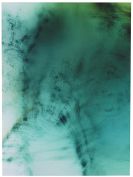
Heinrich Kühn
1866 Dresden
1944 Birgitz
The Austrian photographer Heinrich Kühn, born in Dresden in 1866, is considered one of the founders of "art photography" (also "pictorialism"). After his medical studies, Heinrich Kühn began in 1888 with his first photographic experiments. In 1894 he met Hugo Henneberg and Hans Watzek. Together they explored the expressive possibilities of the gum bichromate process developed by Demachy.
In 1896, Heinrich Kühn became a member of the photographers’ group "Linked Ring", and one year later, together with Henneberg and Watzek, he started the group "Kleeblatt" ("The Clover"). At the Secessions exhibit in 1898 in Munich, his photographs received good reviews. Beginning in 1901, Heinrich Kühn worked above all with portrait studies, in which he placed particular emphasis on presenting the face and hands in a distinct way while allowing unimportant details to sink into cloudy haziness.
In 1907 he began to produce large-format wall pictures in which one can see landscapes; later on he concentrated on still lifes.
Kühn’s pictures are influenced by the gum bichromate process, which facilitates a fine distinction of tonal values in contours that are at the same time very soft. Lack of focus as a stylistic tool has a painterly and at the same time flattening effect on the picture.
In 1907, Kühn became acquaintanced with Steichen and Stieglitz. The latter published Heinrich Kühn’s photographs on several occasions in his journal "Camera Work".
During his whole life, Heinrich Kühn worked with the most recent phototechnical developments. He experimented with the "Autochrome Lumière" process, developed among other things his own portrait lens and wrote numerous articles on photographic issues and innovations.
In 1914 Heinrich Kühn opened a photo school in Innsbruck; five years later he moved to Birgitz, where he died in 1944.

Would you like to sell a work by Heinrich Kühn?
Infos for sellerART MARKET:

Greifbar 105
InkjetPrint on paper, on Dibond aluminum in the..., 2020
Estimated price 200.000
More offers >






